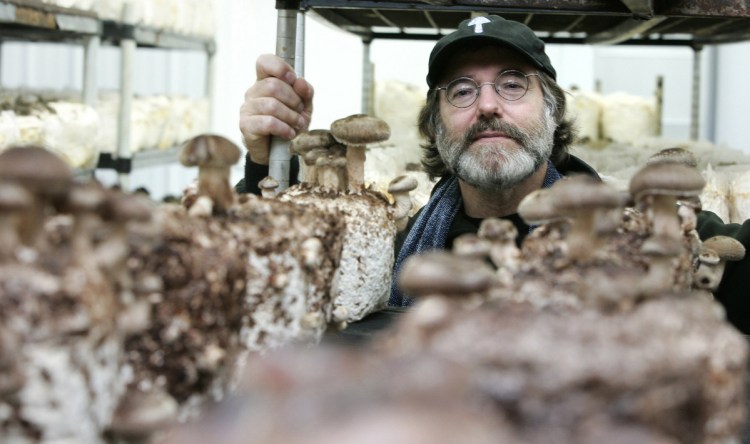SEATTLE — The epiphany that mushrooms could help save the world’s ailing bee colonies struck Paul Stamets while he was in bed.
“I love waking dreams,” he said. “It’s a time when you’re just coming back into consciousness.”
Years ago, in 1984, Stamets had noticed a “continuous convoy of bees” traveling from a patch of mushrooms he was growing and his beehives. The bees actually moved wood chips to access his mushrooms’ mycelium, the branching fibers of fungus that look like cobwebs.
“I could see them sipping on the droplets oozing from the mycelium,” he said. They were after its sugar, he thought.
Decades later, he and a friend began a conversation about bee colony collapse that left Stamets, the owner of a mushroom mercantile, puzzling over a problem. Bees across the world have been disappearing at an alarming rate. Parasites such as mites, fast-spreading viruses, agricultural chemicals and lack of forage area have stressed and threatened wild and commercial bees alike.
Waking up one morning, “I connected the dots,” he said. “Mycelium have sugars and antiviral properties,” he said. What if it wasn’t just sugar that was useful to those mushroom-suckling bees so long ago?
In research published Thursday in the journal Scientific Reports, Stamets described how bees given a small amount of his mushroom mycelia extract exhibited remarkable reductions in the presence of viruses associated with parasitic mites that have been attacking, and infecting, bee colonies for decades.
In the late 1980s, tiny Varroa mites began to spread through bee colonies in the United States. The mites – which are parasites and can infect bees with viruses – proliferate easily and cause colony collapse in just years.
Over time, colonies have become even more susceptible, and viruses became among the chief threats to the important pollinators for crops on which people rely.
“We think that’s because the viruses have evolved and become pathogenic and virulent,” said Dennis vanEngelsdorp, a University of Maryland professor in entomology, who was not involved in the mycelium research. “Varroa viruses kill most of the colonies in the country.”
He likened the mites to dirty hypodermic needles; the mites are able to spread viruses from bee to bee.
The only practical solution to date has been to keep the number of Varroa mites within beehives “at manageable populations.”
Stamets’ idea about bee-helping mycelium could give beekeepers a powerful new weapon.
At first, mushrooms were a hard sell.
When Stamets, whose fascination with fungi began with “magic mushrooms” when he was a “long-haired hippie” undergraduate at The Evergreen State College, began reaching out to scientists, some laughed him off.
“I don’t have time for this. You sound kind of crazy. I’m gonna go,” he recalled a California researcher telling him. “It was never good to start a conversation with scientists you don’t know saying, ‘I had a dream.'”
When Steve Sheppard, a Washington State University entomology professor, received a call in 2014 from Stamets, however, he listened.
Sheppard has heard a lot of wild ideas to save bees over the years, like harnessing static electricity to stick bees with little balls of Styrofoam coated in mite-killing chemicals.
Stamets’ pitch was different: He had data to back up his claims about mycelium’s antiviral properties and his company, Fungi Perfecti, could produce it in bulk. “I had a compelling reason to look further,” Sheppard said.
Together with other researchers, the unlikely pair have produced research that opens promising and previously unknown doors in the fight to keep bee colonies from collapsing.
“This is a pretty novel approach,” vanEngelsdorp said. “There’s no scientist who believes there’s a silver bullet for bee health. There’s too many things going on. … This is a great first step.”
Send questions/comments to the editors.



Success. Please wait for the page to reload. If the page does not reload within 5 seconds, please refresh the page.
Enter your email and password to access comments.
Hi, to comment on stories you must . This profile is in addition to your subscription and website login.
Already have a commenting profile? .
Invalid username/password.
Please check your email to confirm and complete your registration.
Only subscribers are eligible to post comments. Please subscribe or login first for digital access. Here’s why.
Use the form below to reset your password. When you've submitted your account email, we will send an email with a reset code.